Home Remedies for Stink Bug Control: Effective Solutions
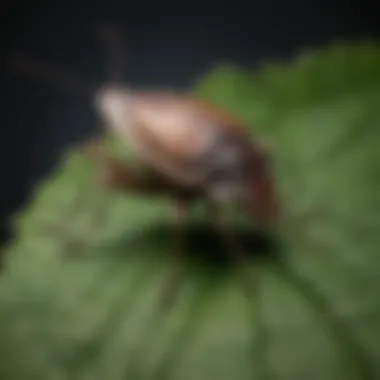

Intro
Stink bugs have become a common nuisance for many homeowners in recent years. Their distinctive shield-shaped bodies and ability to emit a foul odor when threatened make them particularly unwelcome guests. Understanding how to effectively control these pests is crucial for maintaining a comfortable home environment. This guide will explore home remedies and practical strategies for stink bug management, ensuring that you can protect your living space without resorting to harsh chemicals.
Pest Identification
Detailed Descriptions of Common Pests
The most recognized species of stink bug is the Brown Marmorated Stink Bug, or Halyomorpha halys. This pest is identifiable by its mottled brown color, distinctive shield shape, and about a half-inch length. Stink bugs prefer warm areas, often taking refuge indoors during colder months. They feed on a variety of fruits and vegetables, making them particularly problematic for gardeners and those who enjoy homegrown produce.
Signs and Symptoms of Infestations
The presence of stink bugs can often be detected by a few telltale signs:
- Visible Bugs: Often, you may see these bugs on windows, walls, or near entry points of the house. Look for them resting in clusters.
- Odor: If you crush or disturb them, you may notice a strong, unpleasant smell, similar to spoiled food.
- Damage to Plants: Stink bugs feed on plants, leaving behind puncture wounds or browning leaves.
Prevention Strategies
Home Maintenance Tips for Pest Prevention
To effectively prevent stink bug infestations, consider the following home maintenance practices:
- Seal Entry Points: Inspect doors and windows for cracks and gaps. Use weather stripping or caulking to seal these openings.
- Proper Ventilation: Ensure your home is well-ventilated. Stink bugs often seek shelter in warm, humid areas.
- Regular Clean-Up: Keep your home tidy, particularly in areas where crumbs or spills can attract pests.
Natural Deterrents and Barriers
Several natural methods can deter stink bugs from entering your home:
- Essential Oils: A mixture of water and essential oils, such as peppermint or citrus oils, can be sprayed around entryways to repel stink bugs.
- Diatomaceous Earth: This natural substance can be sprinkled in areas where stink bugs tend to gather. It dehydrates insects that come into contact with it.
Treatment Options
Overview of Chemical vs. Natural Treatments
When addressing an existing stink bug problem, it is essential to weigh the benefits of chemical treatments against natural solutions. Chemical pesticides often provide quick results but may carry health risks for pets and children. Conversely, natural remedies tend to be safer but may require more time and persistence.
Step-by-Step Guides for DIY Treatments
Here are some simple, effective treatment options you can try:
- Soap and Water Spray: Mix two tablespoons of liquid soap with a quart of water in a spray bottle. Spray directly on stink bugs to suffocate them.
- Garlic or Pepper Spray: Blend garlic or hot pepper with water and strain the mixture. Spray it around potential entry points to deter stink bugs.
- Vacuuming: For a quick fix, use a vacuum to remove stink bugs from your home. Remember to dispose of the vacuum bag immediately to prevent them from escaping.
"Always exercise caution when using any treatment option. Test any spray on a small area first to ensure it does not damage surfaces."
Understanding Stink Bugs
Understanding stink bugs is crucial for effective pest management in residential spaces. Knowledge of their biology, life cycle, and behavior enables homeowners to devise strategies that not only eliminate existing infestations but also prevent future occurrences. Stink bugs are more than just nuisances; their presence can indicate underlying issues with home maintenance and gardening practices. By exploring what stink bugs are and how they operate, homeowners can gain a significant advantage in monitoring and managing their environments.
Biology and Life Cycle
The biology of stink bugs is remarkable. They belong to the family Pentomidae and exhibit a distinct physical appearance, characterized by a shield-like shape and various color patterns, often green or brown. Stink bugs undergo a hemimetabolous life cycle, which consists of three primary stages: egg, nymph, and adult.
- Egg Stage: Females lay clusters of eggs, usually on the underside of leaves. Each cluster can contain dozens of eggs.
- Nymph Stage: After a week, the eggs hatch into nymphs, which resemble tiny versions of adults but lack wings. This stage lasts several weeks, during which the nymphs molt multiple times.
- Adult Stage: Once fully grown, they can quickly aggregate in numbers, particularly in the fall as they seek shelter indoors.
Understanding this cycle helps homeowners identify when to take action against these pests, ensuring that management efforts align with their developmental stages.
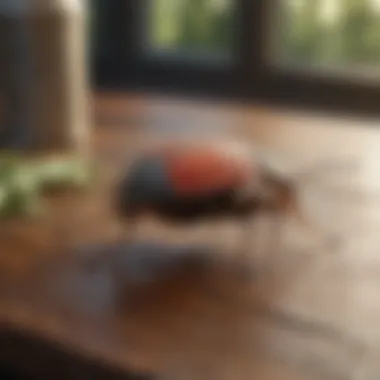
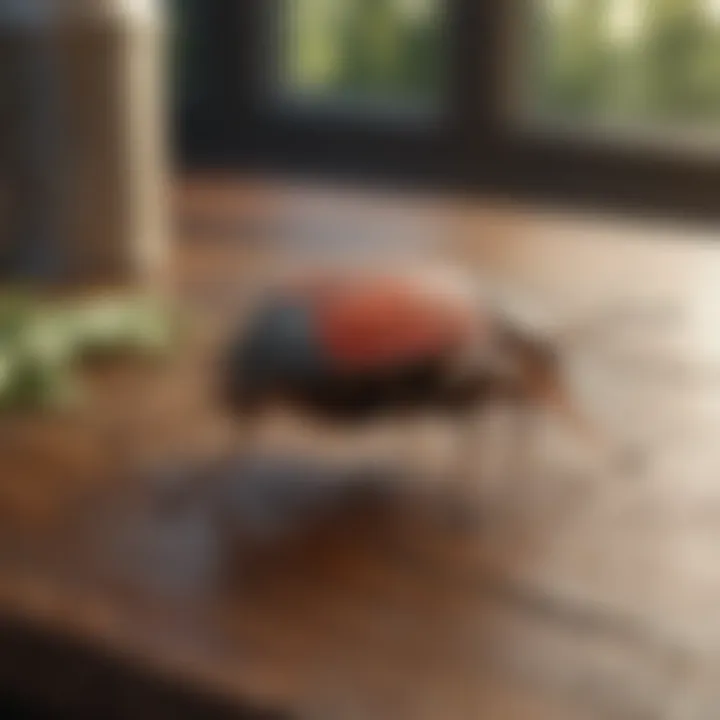
Common Species and Identification
There are several common species of stink bugs that homeowners might encounter:
- Brown Marmorated Stink Bug: This invasive species is known for its brown, mottled appearance and distinctive white markings on its antennae. It is a primary pest in many gardens and homes.
- Green Stink Bug: Characterized by a bright green color, its presence is often noted during the warmer months.
- Spotted Cucumber Beetle: While not a true stink bug, it shares similarities and is often mistaken for them. It is essential to identify these species correctly for effective control measures.
Identifying the type of stink bug present can inform the strategies employed for their removal.
Behavior and Habits
Stink bugs exhibit specific behaviors that affect how they interact with their environment. During the warmer months, these pests are primarily found outdoors, feeding on various plants. They pierce plant tissues to suck out fluids, which can lead to damage in gardens and crops. As temperatures drop, they seek warmth and shelter, often entering homes.
- Feeding Habits: Stink bugs primarily feed on fruits, vegetables, and ornamental plants, leading to economic losses for gardeners.
- Aggregation: They tend to gather in large numbers, especially during the fall, as they search for hibernation spots.
- Chemical Defense: When threatened, stink bugs release a foul-smelling chemical. This defense mechanism is effective against predators.
Awareness of stink bug behavior helps homeowners anticipate their movements and implement preventive measures before infestations occur.
Why Stink Bugs Invade Homes
Understanding why stink bugs invade homes is crucial for managing their presence effectively. Stink bugs, particularly the brown marmorated stink bug, are notorious for seeking shelter as weather conditions change. Their seasonal behavior and attraction to certain environmental factors make them a common nuisance for homeowners. By grasping the reasons behind their invasion, one can better prepare and implement strategies to minimize these unwanted guests.
Attraction to Residences
Stink bugs are drawn to residences primarily for a few key reasons. First, warmth is a significant factor. As temperatures drop in the fall, these pests look for warmer environments to survive the winter months. Homes offer a suitable retreat. Stink bugs can easily enter through small cracks, gaps, or openings in doors and windows.
Additionally, they are attracted to light. This is why many find them gathering around porches or windows at night. The light serves as a beacon of sorts, guiding them to areas where they might seek refuge. Homeowners should be aware that outdoor lighting can unintentionally attract these pests.
Another crucial detail is that stink bugs are also drawn to high moisture levels. Homes with problematic plumbing or high humidity may unknowingly encourage these pests to enter. Keeping attics and basements dry and well-ventilated can help reduce such attractions.
Seasonal Patterns
The invasion patterns of stink bugs are heavily influenced by the seasons. During spring and summer, adult stink bugs are primarily outdoors, feeding on fruits, vegetables, and landscaping plants. As the weather begins to change in late summer to early fall, they start searching for a place to hibernate.
In these transitional months, homeowners often notice an increase in sightings. This is the period during which stink bugs seek entry into homes. Once inside, they tend to gather in hidden spots, making it difficult for homeowners to detect their presence until numbers have increased.
As winter approaches, these bugs enter a state of dormancy. Therefore, understanding this seasonal behavior is essential. It allows proactive measures to be taken before they infiltrate inside, saving homeowners from dealing with potential infestations during the cold months.
Home Remedies for Stink Bug Control
Stink bugs are an unwelcome presence in many homes, especially during warmer months. With their distinct odor and tendency to invade living spaces, controlling their population becomes a priority for effective home management. Home remedies offer an accessible solution that can be environmentally friendly and safer than chemical alternatives. By using common household items, homeowners can regain control over their spaces and minimize the hassle stink bugs bring.
Essential Oil Solutions
Essential oils not only provide pleasant aromas but also serve as effective deterrents against pests, including stink bugs. These natural solutions are non-toxic, making them suitable for households with children and pets.
Peppermint Oil
Peppermint oil is a popular choice for repelling stink bugs due to its strong scent. The aroma is disruptive to their sensory perception, making it effective at keeping them away. This oil also has antimicrobial properties, adding a layer of cleanliness to its use. One unique feature of peppermint oil is its ability to mask odors that attract stink bugs, further enhancing its function as a repellent. However, it’s important to note that while it helps reduce numbers, it may not completely eliminate an infestation on its own.
Lavender Oil
Lavender oil is celebrated for its calming effects on humans, but it works similarly on stink bugs. The scent is unappealing to them, and using it can repel them efficiently. Moreover, lavender has the added benefit of being a natural insecticide. This dual purpose makes it an attractive option for homeowners aiming for a holistic approach to pest control. Nonetheless, over-application might saturate an area, leading to potential attraction rather than repulsion in rare cases.
Eucalyptus Oil
Eucalyptus oil is another effective remedy for combating stink bugs. Its strong fragrance disrupts the bugs' ability to detect food sources and shelter, thus providing a barrier against their entry. The unique characteristic of eucalyptus is its fast-acting nature, producing immediate results compared to some other remedies. However, like other essential oils, it may dilute over time, requiring regular reapplication for sustained effectiveness.
Vinegar-Based Repellents
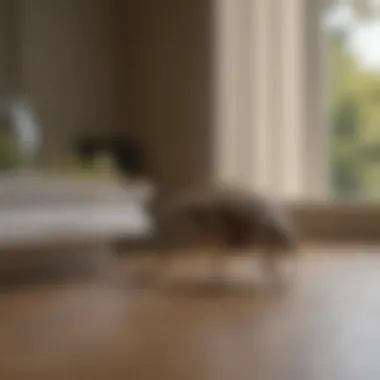
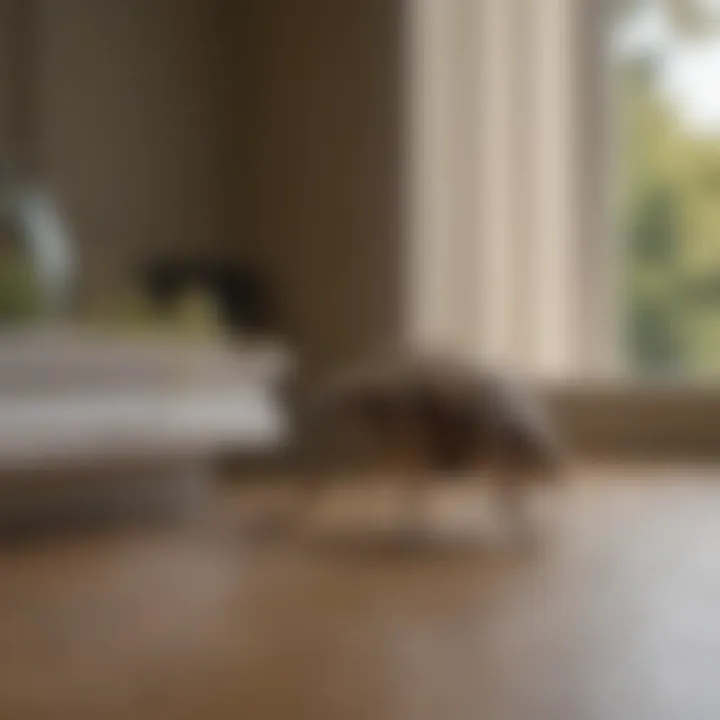
Vinegar has long been used for various cleaning and pest control applications. Its acidity makes it an effective repellent against stink bugs, and it’s also affordable and readily available in most households.
Apple Cider Vinegar Spray
Apple cider vinegar spray serves as a practical repellent due to its strong smell. This solution not only helps deter stink bugs, but it can also be used to eliminate existing ones upon direct contact. Its key characteristic lies in its dual action as a repellent and a pesticide. The unique feature is that it can be mixed with water to create a potent spray that targets bug populations. However, it may have a strong odor for some, which could be off-putting in enclosed spaces.
White Vinegar Solutions
White vinegar solutions are straightforward to make and use. They function similarly to apple cider vinegar but have a sharper scent that many stink bugs find intolerable. This option is inexpensive and effective at cleaning while repelling pests at the same time. The unique property of white vinegar is its ability to evaporate quickly, ensuring no residual scent lingers in your home. One downside might be that it requires multiple applications for persistent infestations.
Homemade Traps
Creating traps at home can be a fun and effective way to control stink bug populations. These traps are often easily made with everyday items and can yield significant results when used consistently.
Soap and Water Trap
The soap and water trap is a straightforward method that exploits stink bugs' natural attraction to light. It involves placing a bowl filled with soapy water near light sources. As the bugs are drawn toward the light, they fall into the water and are unable to escape. One appealing characteristic of this trap is its simplicity and effectiveness in capturing numerous bugs with minimal effort. The downside is that it may need frequent resetting, particularly during peak infestation seasons.
Light Trap Technique
The light trap technique leverages synthetic light sources to attract stink bugs. This method can be very effective in capturing pests but requires some setup. One unique feature of this approach is the use of UV light, which can be particularly appealing to many insects. It offers the potential for a broader range of captured pests, not just stink bugs. However, it may not be practical for all households due to electricity costs and maintenance of the device.
Natural Deterrents
Utilizing natural deterrents can provide an additional layer of protection against stink bugs. These options often consist of ingredients that can be found in most kitchens.
Garlic Spray
Garlic spray is another strong contender in natural pest control options. The strong odor not only masks attractants but is also distasteful for stink bugs. One notable aspect is that garlic can also ward off other pests, making it a versatile remedy. It is simple to prepare, but its effectiveness may wane after rain or watering. Regular reapplication is essential to maintain its deterrent abilities.
Coffee Grounds
Coffee grounds serve as an excellent natural deterrent, as many insects, including stink bugs, are repelled by their scent. Sprinkling used coffee grounds around your home can keep them at bay while also enriching your garden soil. The unique characteristic of coffee is that it is often readily available to households. However, while coffee grounds can be effective for mild deterrence, they may not provide a complete solution during severe infestations.
Chemical Treatments for Severe Infestations
When home remedies fail to manage a stink bug problem, chemical treatments emerge as a viable option. It is crucial to recognize the role these treatments play in pest control. Understanding which chemicals to use can help prevent severe infestations and protect your living space. While natural solutions are often favored, chemical methods can provide immediate results in dire situations. These options are designed for moments when pests have multiplied beyond manageable levels, allowing for a swift response.
Insecticidal Soaps
Insecticidal soaps are effective against stink bugs because they work through direct contact. These soaps disrupt the outer layer of the insect's exoskeleton. This contact leads to dehydration and, ultimately, death. They are particularly beneficial since they lessen environmental impact.
To apply insecticidal soaps:
- Ensure thorough coverage: It is essential to spray directly onto stink bugs for the product to be effective.
- Target hiding spots: Focus on areas where stink bugs congregate, such as under eaves or inside cracks.
- Repeat regularly: Frequent applications may be necessary, especially if the infestation is significant.
Insecticidal soaps are generally safe for use around pets and children, but caution is advised. Always follow the instructions on the product label to minimize risks and maximize efficacy.
Pyrethroid Insecticides
Pyrethroid insecticides present another robust option for managing stink bugs. Derived from chrysanthemum flowers, these chemicals act by disrupting the nervous system of the insects. Stink bugs exposed to pyrethroids often experience paralysis followed by death, making them highly effective. These insecticides should be used when natural methods cannot manage a growing population.
Consider these points when using pyrethroid insecticides:
- Application practices: Apply in early morning or late evening, when stink bugs are most active.
- Check for residual effects: Many pyrethroid products leave a residue that continues to kill pests even after initial application.
- Limit exposure: While generally safe, minimizing exposure to other wildlife and pets is wise.
In sum, both insecticidal soaps and pyrethroid insecticides can serve a key role in controlling severe stink bug infestations. Each method offers specific advantages, and choosing the right one depends on the extent of the infestation and personal preferences regarding chemical use.
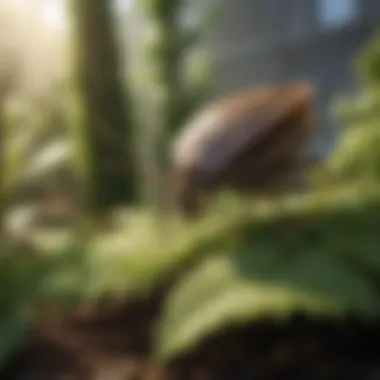
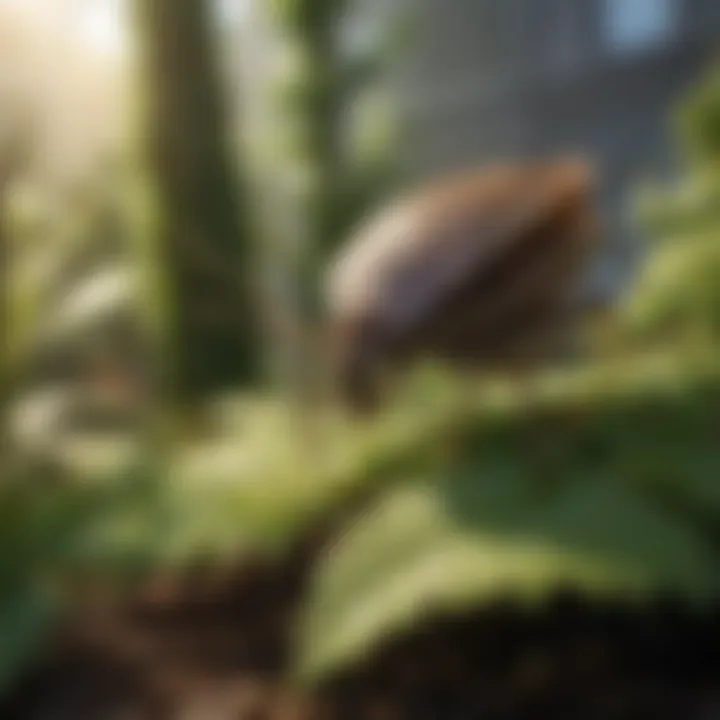
For more detailed information on pest control strategies, check out resources like Wikipedia and Britannica.
Preventive Measures
Preventive measures play a crucial role in keeping stink bugs at bay. Understanding how to manage your space effectively can reduce the likelihood of infestations. Prevention is not just about dealing with existing stink bugs; it is about setting up barriers and practices that avoid their entry and proliferation. The benefits are clear: less reliance on chemical treatments, a more peaceful living environment, and overall better home management.
Sealing Entry Points
One of the most effective strategies in stink bug prevention involves sealing entry points. Stink bugs, like many pests, seek shelter in homes, especially during colder seasons. They can get inside through tiny cracks and gaps. You can start by inspecting areas where utility lines enter the house. Pay attention to windows and doors, as gaps often go unnoticed.
- Use caulk to fill in cracks and seams around windows and doors.
- Install door sweeps to block gaps found at the bottom of doors.
- Screen vents and chimneys to capture potential entry.
Regularly checking your home for these openings can make a significant difference. This method is effective because it directly tackles the issue at its source, preventing stink bugs from making your home their sanctuary.
Landscaping Adjustments
Another vital area for stink bug prevention is landscaping. An overgrown garden or dense shrubbery can attract stink bugs. They thrive in places with plenty of food sources like fruits and flowers. Making some adjustments to your landscaping can create a less inviting environment.
- Trim back overgrown bushes and trees to eliminate hiding spots.
- Clean up fallen fruits and leaves to reduce food sources.
- Limit the use of flowers that attract stink bugs, such as certain types of marigolds.
Landscaping adjustments are essential not only for aesthetics but also serve a functional purpose. They remove habitats that stink bugs favor, lowering their chances of lingering around your home.
Regular Maintenance Practices
Implementing regular maintenance practices is a critical component of stink bug control. Homeowners should be vigilant about their environment.
- Conduct monthly inspections of your home’s exterior.
- Maintain cleanliness in and around the house, including attics and basements.
- Monitor for early signs of stink bugs, such as their characteristic odor or unusual sightings.
Regular maintenance goes a long way in sustaining your preventive efforts. It ensures that any issues are addressed before they escalate into larger problems. Each of these practices contributes to creating an environment that is less hospitable to stink bugs, supporting a long-term strategy against infestations.
Common Misconceptions
Understanding common misconceptions about stink bugs is essential for effective pest control. Many homeowners hold inaccurate beliefs regarding these insects, leading to improper management strategies and unnecessary stress. By addressing these misconceptions, we can foster a clearer understanding about stink bugs and enhance preventative measures.
Stink Bugs and Plants
One prevalent misconception involves stink bugs and their threat to plants. It is widely believed that stink bugs primarily target a wide variety of plant life. While they are known to feed on vegetables and fruits, particularly during growing seasons, their primary interest lies in specific crops. In the U.S., the brown marmorated stink bug, for instance, is particularly notorious for its affinity for crops like tomatoes, apples, and even soybeans.
However, their threat is often exaggerated. Many plants can withstand some level of stink bug infestation without significant damage. Home gardeners often overgeneralize and assume a small presence of stink bugs indicates imminent and irreversible damage to their plants. Instead, proper monitoring and intervention is often enough to manage their presence effectively.
Noxious Fumes and Health Risks
Another major misconception is that stink bugs pose serious health risks to humans due to their odor. Indeed, upon being threatened, stink bugs release a foul-smelling liquid as a defense mechanism. This has led some to believe they are toxic or pose serious health threats if inhaled or consumed.
In reality, the odors emitted by stink bugs are unpleasant but not harmful to health. The chemicals that cause the odor do not cause health issues for people or pets. Furthermore, it is not necessary to worry about long-term effects from exposure, as those odors dissipate quickly and are not considered hazardous.
While stink bugs can be a nuisance, understanding their behavior and risks helps homeowners manage them more effectively.
Culmination
Recap of Effective Strategies
In summary, various strategies have been outlined throughout this article to tackle stink bug infestations. These methods emphasize the use of natural and sustainable solutions, such as essential oils, vinegar-based repellents, and homemade traps. Here are some key strategies:
- Essential Oils: Utilizing peppermint, lavender, and eucalyptus oils can effectively repel stink bugs due to their strong scents.
- Vinegar Sprays: Apple cider vinegar and white vinegar mixed with water serve as excellent deterrents.
- Homemade Traps: Traps made from soap and water, or those using light attraction, can trap and eliminate stink bugs effectively.
- Natural Deterrents: Garlic spray and coffee grounds act as additional natural barriers to prevent stink bugs from entering.
This amalgamation of strategies not only allows homeowners to manage current infestations but also establishes an ongoing preventive approach.
Further Reading and Resources
To deepen your understanding and equip yourself with additional tools in managing stink bugs, consider exploring the following resources:
- Wikipedia on Stink Bugs provides a broad overview of their biology and behavior.
- Britannica offers an insightful look into pest control measures and ecological significance.
- Engaging with community discussions on platforms like Reddit can connect you with other homeowners experiencing similar issues, where you can exchange tips and remedies.
- Social media groups on Facebook often share real-life experiences and solutions that can be beneficial for those dealing with stink bugs.



